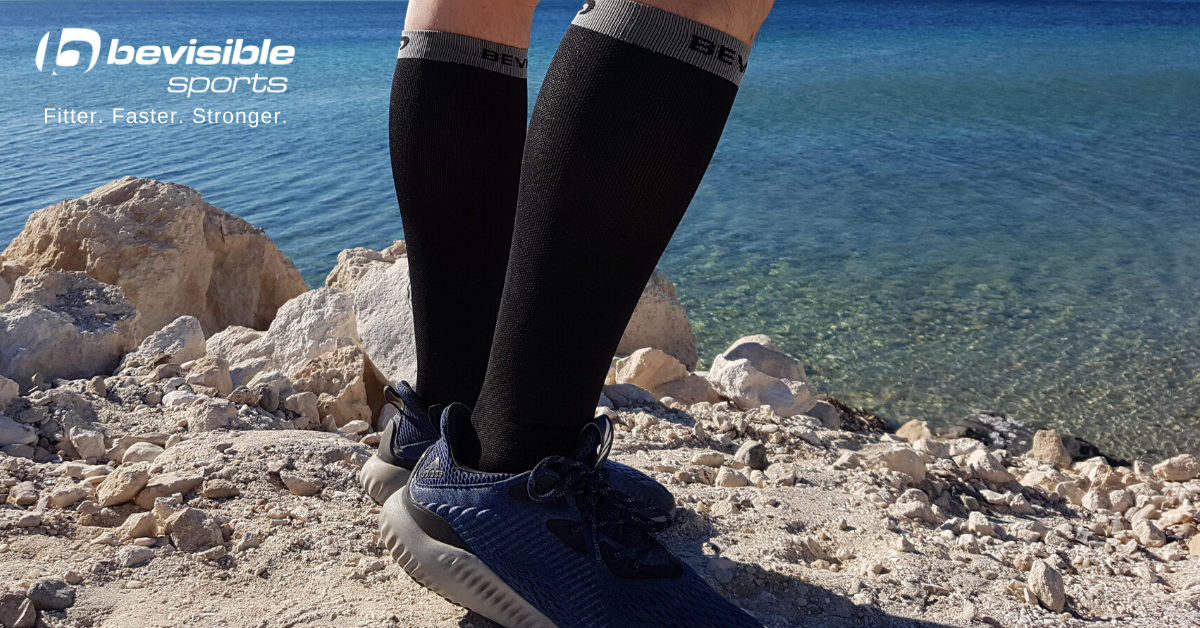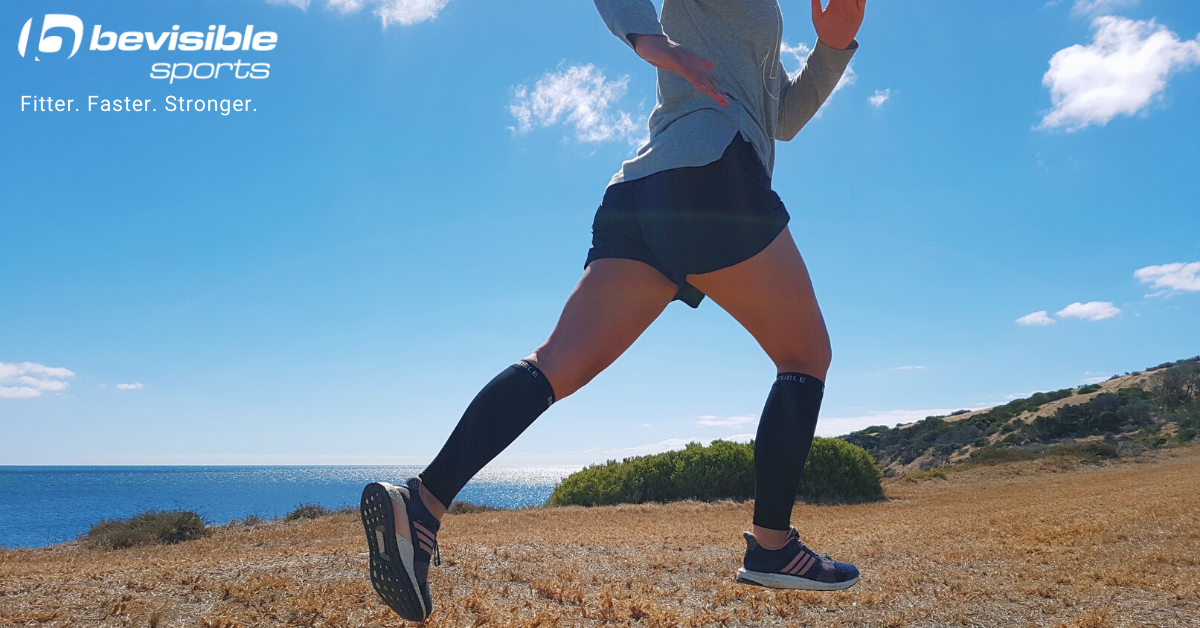What are Shin Splints?
Shin splints is a term that refers to the pain that arises in the shins - the front of the lower legs. Shin splints, medically referred as medial tibial stress syndrome is basically an inflammation of the muscles, bone, tendons and tissues around your shinbone or tibia.
The pain which is usually felt along the shinbone from the knee and ankle is caused due to strenuous activity, more commonly in stop- start sports such as tennis, squash or basketball and generally occurs in athletes, dancers or aggressive walkers.
However, learning about the primary causes, symptoms, treatment and shin splint prevention tips can be highly beneficial in helping you deal with shin splints to a great extent.
Wearing shin splints compression sleeves can also be helpful & this is covered later in the article.
Causes of Shin splints
Overuse: Shin splints injuries are also called overuse injuries that usually occur when you are trying to exercise beyond your current fitness levels, thereby causing a strain on your muscles, bones, tendons and joints
Hard surfaces: Running downhill or on hard, uneven or slanted surfaces often causes shin muscles and tendon injury.
Faulty techniques: Incorrect form of running such as pronation (rolling feet inwards) can often strain tendons and muscles and cause shin splints.Flat feet: The shin muscles are involved in maintaining the arch of the foot. Thus, people who have flat feet or rigid arches can often cause the shin tendons to pull, thereby causing slight tearing.
Running Shoes: Wearing incorrect shoes while running can also lead to shin splint pain.
Symptoms of Shin Splints
- Pain is felt on the either side of the shinbone area
- The pain or ache usually occurs before, during or after running
- Pain may also be triggered when you bend your foot or toes forward
- The skin of the affected area may be inflamed and red
- There may be swelling, bumps or lump along the inside of the shinbone
- The area may feel tender and sore to touch
- A dull ache felt in the front part of the lower leg
Shin Splints Prevention Tips
- Wear Proper Shoes: Always wear proper fitting shoes that offer good support. When shopping, always choose those athletic shoes that go with your particular foot pattern. Place shock absorbing insoles in your shoes and take care to replace them immediately before they wear out.
- Build your fitness levels: Try to extend the duration, frequency and intensity of your exercise routine to gradually build your fitness levels.
- Barefoot running: The fact that running barefoot helps spread the stress impact among muscles; it helps reduce the risk of shin splints injury. This may help, but you need to stop it if it does not feel comfortable for you.
- Importance of doing Warm ups: Doing a warm up before starting on an exercise routine helps stretch your leg muscles, thereby helping prevent shin splints injury.
- Avoid hard surfaces: To prevent shin splints, it is recommended that you avoid hard surfaces, slanted slopes or uneven terrain. Choosing flat, soft surfaces such as grassy ovals or runny tracks is highly advisable.
- Low impact activities: Cross train with low impact activities such as walking, swimming or cycling to improve your overall flexibility and strength.
Shin Splints Treatment Options
If you are suffering from shin splints, it is highly recommended that you take a break from your strenuous physical activities and give your legs some rest. The pain that is caused due to shin splint injury often subsides in a few hours or few days with complete rest and limited activity. Listed below are some of the treatment options that can help you get relief from shin splints.
Rest: The fact that shin splints are generally caused to the overuse of muscles, tendons, bone and joints, taking rest for several weeks can play a crucial role in healing shin splints. However, low impact aerobic activities such as swimming or walking can be substituted during your recovery period after consulting your physician.
Take over the counter medication: Taking non steroidal anti inflammatory medications such as aspirin, ibuprofen and naproxen can prove to be highly beneficial in helping reduce swelling and pain. However, since these drugs tend to have side effects, they should be taken only occasionally or under the guidance of a professional.
Ice Pack: Using ice packs on the affected area for about 20-25 minutes every three to four hours for about two to three days can help ease the pain and swelling naturally to a great extent.
Using Orthotics: If you are one of those people who have flat feet, using orthotics (supportive insoles) that are either bought from the shelf or are custom made can helps stabilize and align your foot and ankle, taking the stress off from your lower legs.
Flexibility Exercises: The fact that tight calf muscles often cause lower leg injuries including shin splints, stretching your lower leg muscles can go a long way in helping your shins feel better.
Sports massage technique: The fact that sports massages are quite beneficial for breaking down scar tissue and loosening calf muscles, getting some sports massage is a great way of treating shin splints.
Surgical Treatment: A surgery for shin splints is only recommended in very severe cases that fail to respond to nonsurgical treatments.
However, if your shin splints fail to respond to common treatment methods and you are experiencing symptoms such as severe pain or swelling in your shin area or see a shin that is visible inflamed or is feeling hot- it is highly suggested that you visit your physician immediately for further treatment.
Use a Shin Splints Compression Sleeve or Compression Socks: A shin splints compression sleeve is one of those shin splints healing tools that can used to heal the shin splint injury quickly. A doctor usually recommends using a shin splint compression sleeve especially if you have been diagnosed with a shin splint fracture. Using this compression sleeve not only helps provide you with all the support required to continue working, but also helps protect the bone from the wear and tear of regular daily activities. In addition, using a compression sleeve will help your fracture heal much faster. In fact wearing this compression sleeve will provide all the support and stability to your legs, thereby making them less prone to injury.
You can also purchase a calf compression sleeve (available in many colors & sizes) or a full length compression socks from our store by clicking the links below.
Calf Compression Sleeves For Men & Women
Here is what some of our customers have said about how our calf compression sleeves have helped them with shin splints:

I just have to say....these calf sleeves literally saved me. I couldn't run for months because of how bad my shin splints were so these were suggested to me and now I own several pairs.
I can now run again and I don't feel an ounce of pain!! Shin splints are the WORST and I absolutely love to run.....thank god I found these. They fit great, awesome color choices, and best part is I can run again. Thank you!!
Alissa 02/21/17

"The calf compression sleeves were purchased for my 13 year old son who plays football. Everyday after practice, we would have to ice his shins and calves, elevate them, then rub biofreeze before bed time and in the morning.
He wore the compression calf sleeves to his football practice yesterday and he had no complaints after practice.
Of course, we still iced his legs and elevated them but he said that the compression sleeves really helped. Today, he said that his legs are not hurting as much as before. He's able to walk without discomfort too.He feels that the compression sleeves helped him and wants me to purchase at least two more. Thank you for helping me help my son."
Football Mum 02/15/17

I bought it because I was going to use it for my long flight, but I found my shin splints disappeared by wearing them. Great product.
Ben 01/29/17
Compression Socks
If you prefer compression socks over compression sleeves, you can choose from our compression socks below. These also aid in helping recover from shin splints.

Compression Socks For Men & Women
Prefer to buy our compression socks on Amazon?
You can purchase our compression socks on Amazon here:
Disclaimer
Information provided in this article is for reference purposes and is not intended to substitute for advice given by a physician, pharmacist, or other licensed health-care professional. You should not use this information as self-diagnosis or for treating a health problem or disease.
Contact your health-care provider immediately if you suspect that you have a medical problem. Information and statements are not intended to diagnose, treat, cure, or prevent any disease or health condition.
If you have any health or medical problems please consult with your doctor who can examine you in person & provide the best possible advice.





